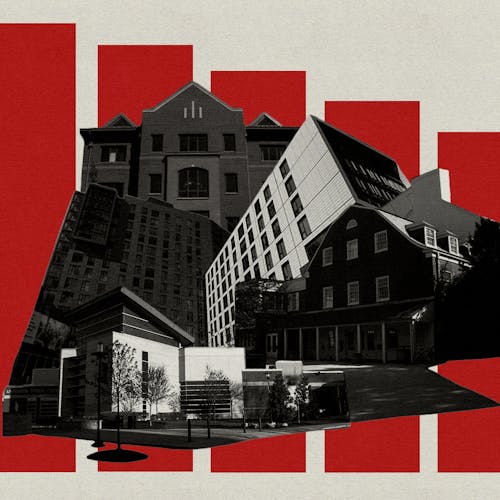MALIK: Rutgers needs more than signs to make up for its racist history
Column: On the Good Life

Rutgers has placed historical markers acknowledging the relationship between its existence and enslaved labor around several campuses, standing tall outside of Frelinghuysen Hall and Hardenbergh Hall on the College Avenue campus, the Livingston Student Center and the Wood Lawn Mansion on Douglass campuses since 2021.
The Livingston historical marker holds information about William Livingston, the first governor of New Jersey, after whom Livingston campus was named. Specifically, it states that his family made a fortune from trafficking people in the transatlantic slave trade.
These historical markers are really just signs around campus, begging the question of whether their existence is because of Rutgers' genuine care for its embarrassing origins or just an apathetic coverup to prove it acknowledges its history and cannot be bothered to do anything substantial.
When I first came on campus, the markers stood out to me for their height and for the fact that they were very obviously promoted during orientation, adding to the progressive image Rutgers wished to exude.
At that moment, it was clear that the party that was mainly reaping the benefits of these historical markers was none other than Rutgers itself.
Additionally, the use of signs rather than monuments or something more permanent seems to be an obvious sign that the University is trying to fulfill a checklist and make the appearance that it cares and is with the times. The lack of permanence in these signs allows the University to be noncommittal and change its opinions over time rather than being forced to back its decision or acknowledge the situation completely.
As I have stayed on campus longer, I have seen how quickly these markers can blend into the background. Your eyes may be attracted to their high stature as you walk around campus on a tour or when you have time to stop, but the average student going from class to class is not stopping or looking up.
Rutgers clearly wants applause, or at least to move away from possible criticism, with the creation of these markers. But these signs are doing the very least, and at most, are only acknowledging the past.
Acknowledging the connections between Rutgers' existence and slavery is only half the battle. If the University truly cared about rectifying the injustice behind its history, it would take steps forward in substantial aid. For example, some universities have begun to pay back descendants of those who helped build campuses in reparations.
This is a step in the right direction as it not only acknowledges the injustice of the past but also aids those affected in a meaningful way. Putting up a couple of signs is a way for the University to acknowledge its past but not deal with it.
By using the money of universities and colleges for reparations, there is an effort not to erase the past but rather to create some form of justice in a situation where there cannot ever be true justice.
This is not to say that the historical markers are completely horrible. The one on Livingston campus hopes to honor Bell and Lambert and others enslaved by the Livingston family. Without any other indication of care for the history or any real effective action taken by Rutgers to help provide some justice, though, these historical markers fail to make a convincing impact.
If this is our way of showing that we care, is it enough?
I do not think so. If you find yourself attending class in Frelinghuysen Hall or walking around the Livingston Student Center, look around. You may have to look up, but once you really get the chance to read these signs. Take it in and, of course, honor those who forcefully built the campus around you without any credit.
But also take into consideration the lack of action Rutgers has taken to support these words. Then ask yourself: Who is actually benefiting here?
Sehar Malik is a first-year in the School of Arts and Sciences, where she is majoring in molecular biology and biochemistry and minoring in French. Her column, "On the Good Life," runs alternate Thursdays.
*Columns, cartoons and letters do not necessarily reflect the views of the Targum Publishing Company or its staff.
YOUR VOICE | The Daily Targum welcomes submissions from all readers. Due to space limitations in our print newspaper, letters to the editor must not exceed 900 words. Guest columns and commentaries must be between 700 and 900 words. All authors must include their name, phone number, class year and college affiliation or department to be considered for publication. Please submit via email to oped@dailytargum.com by 4 p.m. to be considered for the following day’s publication. Columns, cartoons and letters do not necessarily reflect the views of the Targum Publishing Company or its staff



